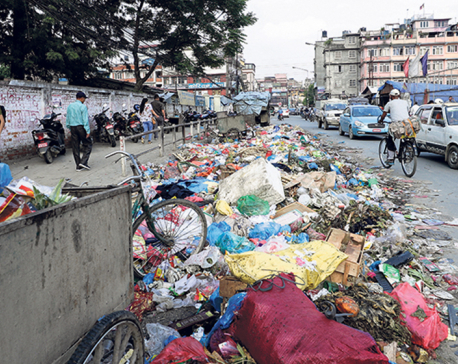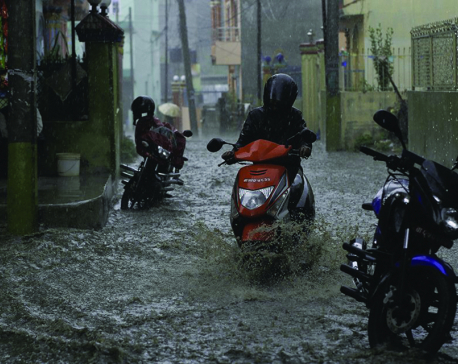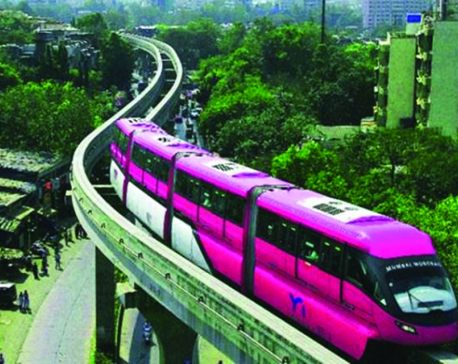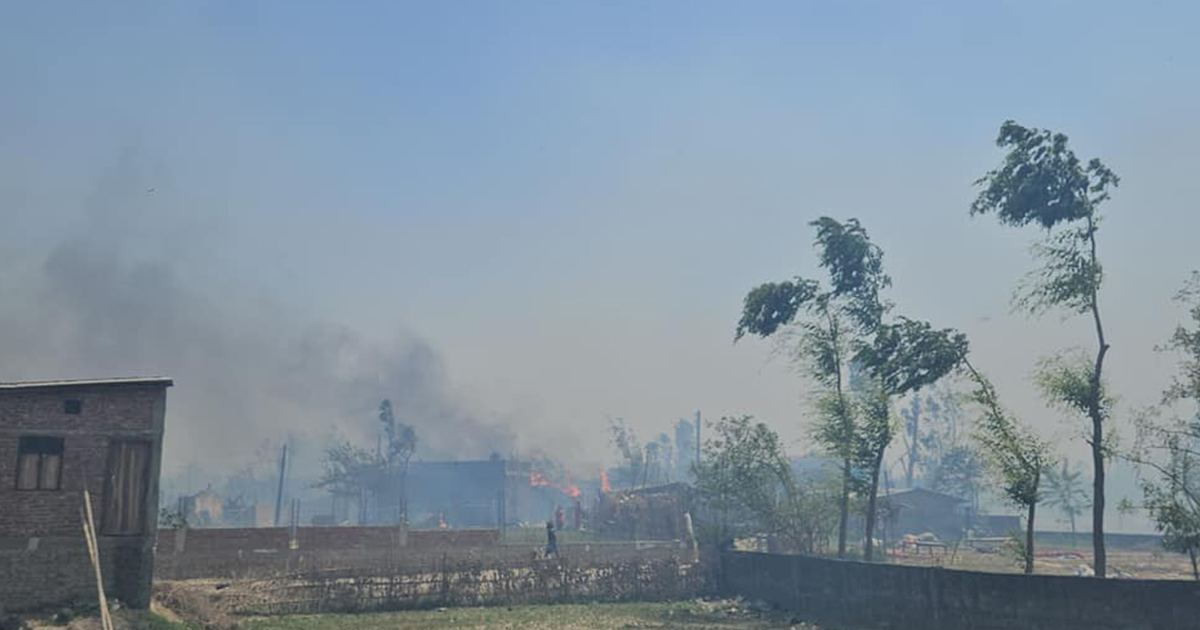
OR
Opinion
The Ill-planned Roadside Plantation in Kathmandu
Published On: September 16, 2021 07:05 AM NPT By: Dr Uday R Sharma

More from Author
Planting trees is a good thing, nobody can deny this, but should not one consider other factors before launching such projects with long-term consequences?
Roadside plantations in cities can bring city dwellers closer to nature. Trees make people think they are having a good thing. They elevate the aesthetic beauty of the place as well as bring inspiration to think about nature. In the past, Kathmandu was full of trees and open spaces left for religious purposes. People in power then took greening as granted. There were plenty of trees in the Kathmandu Valley, be it a few trees at the end of private upland properties, religious old trees such as peepal and bar on the crossroads or near temples, or roadside trees planted by Shree Teen Sarkars. Many of these planted areas belonged to government or private guthis. Several holy lakes and trees around them kept their lives lively and very close to nature. The situation changed rapidly after the modern governments. I can see in my lifetime all good public or guthi-owned natural sites illegally converted into private land by corrupt bureaucrats or the policy they adopted. Trees were felled and continue to be felled for road expansion. So much so that the residents of Kathmandu worry about the noise and air pollution and find limited space to walk around in the neighborhood to breathe fresh air. There are so few places the old folks can sit down and be able to leave their congested houses for at least sometime in a day. Now the residents of Kathmandu are increasingly becoming interested in planting trees, and civil society organizations and local governments are finding money to plant trees even on the narrow pavements.
The Rotary Club of Dillibazar and Art of Living and similar pro-nature organizations are planting trees in the neighborhoods of Dillibazar, Gyaneshwor, Naxal and Gairidhara like elsewhere in Kathmandu. Almost all sidewalks in this area are narrow (mostly 1-2 meters) and the adjacent private property is owned/rented mostly by small shopkeepers. Many of these shopkeepers encroach upon even these narrow pavements by spreading their merchandise everyday on the pavements. The construction materials, sand, aggregates, iron rods and bricks, are often dumped on the pavements for them to be carried to sites where delivery trucks cannot reach. The pavements are often seen being used to park motorbikes and in places even tying live goats! The sidewalks are often dug open and left like that for weeks for putting utility supply pipes and sewerage lines. The pavements are so much in use for these purposes that pedestrians often walk on the road risking their lives in the traffic.
Planting trees is a good thing, nobody can deny this, but should not one consider other factors before launching such projects with long-term consequences? I sat to discuss this with one of the proponents of this greenery program. One of the private companies working on this said to me that they have championed their work in places like Tripureshwor and Gairidhara, where tree survival is impressive and you can sense now the change from brownish landscape to a greener one. The offer is impressive, for Rupees 3500 per plant the company will put an iron tree grill around each plant for its protection, water them twice a month, replace any dead plants, and trim them regularly to maintain the height not to exceed 15 feet. The service will be provided for the first five years. The commercial banks, eager to find projects to spend their money on social corporate responsibility, would quickly fund these projects. Their names, as sponsors, can be seen all over the neighborhoods, inscribed on each grill, providing the banks an added advantage to advertise themselves.
As a retired forester, it seems, it becomes my moral responsibility to flag out the consequences of these ill-planned plantings while risking not to dampen the spirit of making Kathmandu a green city. Roadside plantation is a common thing in all developed countries and there are manuals on how to do this work efficiently. Some of these criteria are so obviously common sense, it becomes difficult to comprehend how the local governments would allow such a thing. Tall trees should not be planted on narrow pavements. The pavements should be at least wider than three meters. The ideal would be to leave one meter from the road-curb to the pedestrians and set aside a green area of another meter after that.
In order for the trees not to touch the infrastructure there should be another one meter of land from the green space. Arrangements of the trees should be such that they should not create any obstruction in the movement of traffic. The trees, when fully grown, should not interfere with the power lines and obstruct traffic lighting, signage or building's main entrance. A rule of thumb is that 30 feet high trees should be planted at the minimum 3-4 feet from the sidewalk, 30-50 feet trees at 5-6 feet away from the sidewalks and higher than 50 feet trees at a minimum of eight feet from sidewalks. The preferred spacing is at least 30 feet. The deep-rooted trees should be preferred so that their roots do not affect utilities, sidewalks or curbs.
The choice of species is very important. One cannot just pick up plants that are easily found in the nurseries, but design the plantation plan to suit the location, soil, and micro-environments. Generally speaking, the selected species should be drought-resistant and preferably of columnar form. Planting common fruit trees is inviting traffic hazard as children would hang around here more. The local governments in Kathmandu have been seen giving preference to kapur (Cinnamomum sp.), kaiyo (Grewia sp.), paiyu (Prunus), and others. The selection of species must be well thought out before planting them on the roadside.
While growing awareness for planting trees is a very encouraging sign, this tempo must be supported with appropriate technical advice before the movement starts to die down. The Kathmandu Metropolis should work on a roadside plantation manual with the support of the technical expertise. The urban planners, especially those working on building new roads or expanding the existing roads should incorporate the concept of roadside plantation in their designs.
You May Like This

Environmental Crisis in Kathmandu: Anarchy on Display
The planes that fly over our sky have passed their utility 10 years ago. The public buses that run in... Read More...

Saving Kathmandu
The houses and structures which have blocked rajkulos and canals should be shifted elsewhere ... Read More...

Why monorail is bad for Kathmandu
One of the biggest downsides of monorails is when something goes wrong, or if a section of track needs to... Read More...





Just In
- World Malaria Day: Foreign returnees more susceptible to the vector-borne disease
- MoEST seeks EC’s help in identifying teachers linked to political parties
- 70 community and national forests affected by fire in Parbat till Wednesday
- NEPSE loses 3.24 points, while daily turnover inclines to Rs 2.36 billion
- Pak Embassy awards scholarships to 180 Nepali students
- President Paudel approves mobilization of army personnel for by-elections security
- Bhajang and Ilam by-elections: 69 polling stations classified as ‘highly sensitive’
- Karnali CM Kandel secures vote of confidence















Leave A Comment